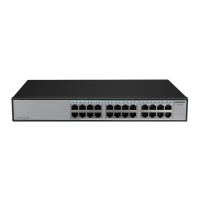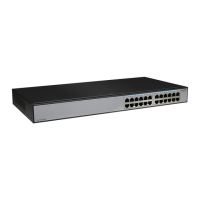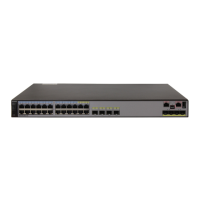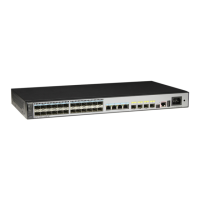Whether to enable the appropriate protection on interface. The
options are as follow:
Root protection: root protection function can protect the root
switch position by maintaining the role of designated port. By
configuring the Root Protection on port, all the port roles in
instances will be kept as designated ports. When the port receives a
higher priority BPDU, the port role will not be set as
non-designated port, but turn into the listening state and stop
forwarding packets. If the port has no longer receives higher
priority BPDU after a long time, it will restore to its original
normal state.
Loop Protection: on the switch, the status of root ports and other
blocked ports are relying on the continuous BPDUs received from
the upstream. The switch will reselect root port when the BPDU
from the upper switch can not be received because of network
congestion or unidirectional link failure. If the original root port
becomes a designated port and the original blocked port moves to
the forwarding state, it will results in undesirable loops in Switch
network. Loop protection function can suppress this kind of loop.
After the loop protection started, if the root port can not receive a
BPDU from upstream, it will be set in blocked state, and the
blocked ports will remain in blocking state and does not forward
packets to the network to ensure that no loop can be formed.
TC Protection: the switch will delete MAC address table and ARP
table entry if TC-BPDU is received. The frequent deletion of table
entry for receiving a large amount of TC-BPDU will bring a great
burden to device. TC protection Configuration on interface can
avoid frequent deletion operations, and will avoid the transmission
of TC-BPDU.
force-true: indicate a point-to-point share link. Point-to-point
interface is similar to the edge interface, but the point-to-point
interface mode must be full-duplex mode. Like the edge interface,
the point-to-point interface can transform to forwarding state
quickly in order to gain the advantages of RSTP.
force-false: indicate the interface does not have a point-to-point
state.
auto: indicate the interface will transform to point-to-point state
whenever it can be transformed, just as the point-to-point state
"force-true" . If the interface cannot remain in this state (for
example, the interface was forced to run half-duplex mode), the
state will be changed, just as the state of "force-false". The default
parameter is set to "auto".

